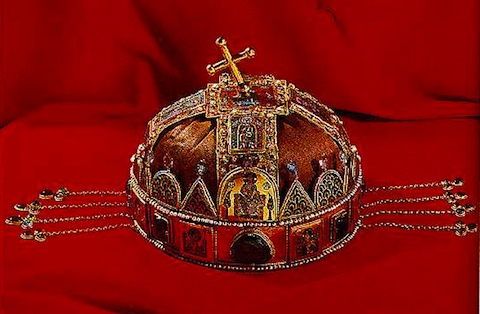
Much is made of the way in which the Soviets scored themselves some really nice artworks in the waning days of World War II, scooping up the priceless paintings and statues that the Germans had looted on their doomed march toward Moscow. But our side had some sticky fingers, too, to the great consternation of Hungary. Less than a week before V-E Day, American soldiers stumbled across a Bavarian train that was carrying The Crown of St. Stephen, the symbol of royal Hungarian authority since the early 11th century. Aware that the Iron Curtain was about to descend on the traditional Land of the Magyars, we spirited the crown back to these shores and locked it up in Fort Knox—not because our government had any designs on selling the artifact, but rather because we knew that it would eventually come in handy as a bargaining chip. Even in May 1945, the realities of Cold War politics were well-known in the halls of power.
The theft stung Hungary not only because of the crown’s sentimental value, but also because the object actually had legal status. A 1965 piece on the controversy explains:
The crown was always far more than a piece of jewelry, as most crowns in the kingdom were. It had what was called a “legal personality,” manifested, among other things, in such traditions as the courts of justice pronouncing verdicts “in the name of the holy crown,” rather than in the name of the king.
We did eventually return the crown while Hungary was still under Communist rule, in exchange for little more some warm feelings. That seems like a pretty weak haul, given that we initially refused to exchange the crown for an actual human life.
I also wonder whether the Hungarians ever went so far as to plan a rescue operation. Perhaps they could have succeeded where Auric Goldfinger failed.


Like gas stations in rural Texas after 10 pm, comments are closed.